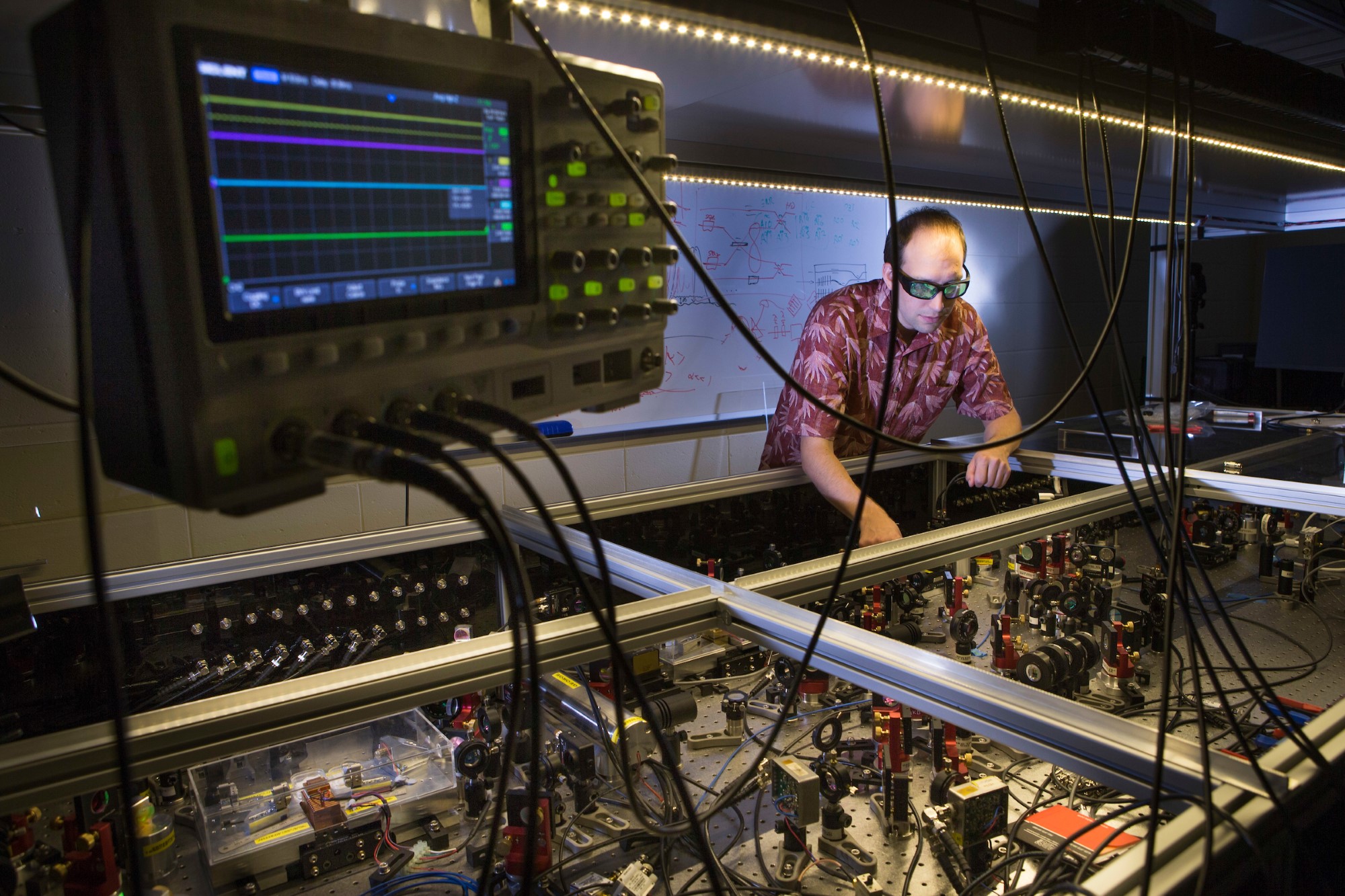
Research projects
Discover the forefront of astronomy and astrophysics through our projects, ranging from deep-space communication systems to groundbreaking adaptive optics. Explore our diverse, ongoing research initiatives shaping the future of space science.
Displaying 1 - 15 of 17 project(s).
This project has two components: developing the science case for the instrument, defining the mission parameters that are necessary to ensure the science goals are achieved; and, for a student so inclined, physically building the telescope and camera system.
Theme
- Instrumentation
- Stellar and planetary astronomy
- Structure and evolution of the Cosmos
Student intake
Open for Bachelor, Honours, PhD students
People
- Associate Professor Bradley Tucker, Supervisor
- Dr Joice Mathew, Supervisor
This project has two components: developing the science case for the instrument, defining the mission parameters that are necessary to ensure the science goals are achieved; and, for a student so inclined, physically building the telescope and camera system.
Theme
- Instrumentation
- Stellar and planetary astronomy
- Structure and evolution of the Cosmos
Student intake
Open for Bachelor, Honours, PhD students
People
- Associate Professor Bradley Tucker, Supervisor
- Dr Joice Mathew, Supervisor
Obtaining a good understanding of the physics of star formation remains one of the main problems in astrophysics today. The formation of stars determines the structure, evolution and luminosity of galaxies, and quite possibly contributed to the reionisation of the early Universe.
Theme
- Stellar and planetary astronomy
Student intake
Open for PhD students
People
- Dr Marc White, Principal investigator
- Emeritus Professor Geoff Bicknell, Supervisor
Obtaining a good understanding of the physics of star formation remains one of the main problems in astrophysics today. The formation of stars determines the structure, evolution and luminosity of galaxies, and quite possibly contributed to the reionisation of the early Universe.
Theme
- Stellar and planetary astronomy
Student intake
Open for PhD students
People
- Dr Marc White, Principal investigator
- Emeritus Professor Geoff Bicknell, Supervisor
Measuring asteroid properties with the Kepler Space Telescope to find Future Asteroid Mining Targets
Theme
- Stellar and planetary astronomy
Student intake
Open for Bachelor, Honours, PhD students
Observatory
People
- Associate Professor Bradley Tucker, Supervisor
Study of the statistics of turbulent, magnetised gases, relevant for the structure and evolution of the interstellar medium, the formation and evolution of stars and galaxies, using a combination of supercomputer simulations, theory, analytical calculations, and comparison to observations.
Theme
- Stellar and planetary astronomy
- Structure and evolution of the Cosmos
Student intake
Open for Bachelor, Honours, PhD students
Observatory
People
- Professor Christoph Federrath, Supervisor
The goal of this project is to make predictions for the observable gamma-ray signatures of different plasma physics models for cosmic ray transport.
Theme
- Stellar and planetary astronomy
- Structure and evolution of the Cosmos
This short project will using existing data for a sample of red giant stars from the OGLE II and III, and MACHO surveys.
Theme
- Stellar and planetary astronomy
In this project, we have worked on developing and comparing empirical pressure-temperature (P-T) phase diagrams of water, Earth, and terrestrial life, to quantify the terrestrial limits on the habitability of water and help identify the factors that cause some terrestrial water to be uninhabited.
Theme
- Stellar and planetary astronomy
In this project, we have worked on developing and comparing empirical pressure-temperature (P-T) phase diagrams of water, Earth, and terrestrial life, to quantify the terrestrial limits on the habitability of water and help identify the factors that cause some terrestrial water to be uninhabited.
Theme
- Stellar and planetary astronomy
The effective temperature is one of the most fundamental parameters of a star, and its precise determination is crucial for a number of purposes, e.g., from measuring chemical abundances and ages, to improving stellar and atmosphere models.
Theme
- Galactic archaeology
- Stellar and planetary astronomy
M dwarfs are the most abundant stars in the universe, and prime targets for detecting Earth-like planets.
Theme
- Galactic archaeology
- Stellar and planetary astronomy
We are looking for ambitious students keen to join the project. They can be involved in different aspects, both observational and theoretical/computational
Theme
- Galactic archaeology
- Stellar and planetary astronomy
In this project, you will lead development of a key sub system (optical, mechanical, computational) to enable novel ultra-high resolution, visible light instrument Pyxis: a prototype for an astrophysical space interferometer.
Theme
- Instrumentation
- Stellar and planetary astronomy
Student intake
Open for Bachelor, Honours, PhD students
People
- Associate Professor Tony Travouillon, Supervisor
- Professor Michael Ireland, Supervisor
In this project, you will lead development of a key sub system (optical, mechanical, computational) to enable novel ultra-high resolution, visible light instrument Pyxis: a prototype for an astrophysical space interferometer.
Theme
- Instrumentation
- Stellar and planetary astronomy
Student intake
Open for Bachelor, Honours, PhD students
People
- Associate Professor Tony Travouillon, Supervisor
- Professor Michael Ireland, Supervisor
